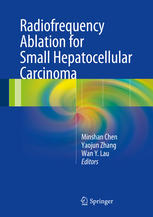

Most ebook files are in PDF format, so you can easily read them using various software such as Foxit Reader or directly on the Google Chrome browser.
Some ebook files are released by publishers in other formats such as .awz, .mobi, .epub, .fb2, etc. You may need to install specific software to read these formats on mobile/PC, such as Calibre.
Please read the tutorial at this link: https://ebookbell.com/faq
We offer FREE conversion to the popular formats you request; however, this may take some time. Therefore, right after payment, please email us, and we will try to provide the service as quickly as possible.
For some exceptional file formats or broken links (if any), please refrain from opening any disputes. Instead, email us first, and we will try to assist within a maximum of 6 hours.
EbookBell Team

5.0
50 reviewsThis book provides a comprehensive guide to the treatment of small hepatocellular carcinoma (sHCC) using a minimally invasive technique: radiofrequency ablation (RFA). RFA has emerged as a new treatment modality and become the main modality of locoregional therapy. Extensive clinical research indicates that RFA is as effective as surgical resection for sHCC, and it has the advantage of being less invasive. However, the outcomes after RFA are largely dependent on the operators’ experience- known as the “learning curve”. This book presents the characteristics of sHCC and discusses why sHCC is the best candidate for RFA. Then it introduces all the commercially available RFA systems, and their working principles, advantages, disadvantages and so on. It goes on to demonstrate how to perform RFA under the guidance of ultrasound, CT, laparoscopy, or during open operation. Finally, it discusses the radiologic assessment and follow‐up after RFA, as well as adjuvant therapies and clinical trials on RFA. The authors are experts from the fields of pathology, radiology, surgery, and gastroenterology, as well as manufacturers. With this book, readers gain have a clear idea of when and how to do RFA. It aims to standardize and generalize the procedure of RFA, which will be very helpful in improving the outcome of RFA for sHCC.